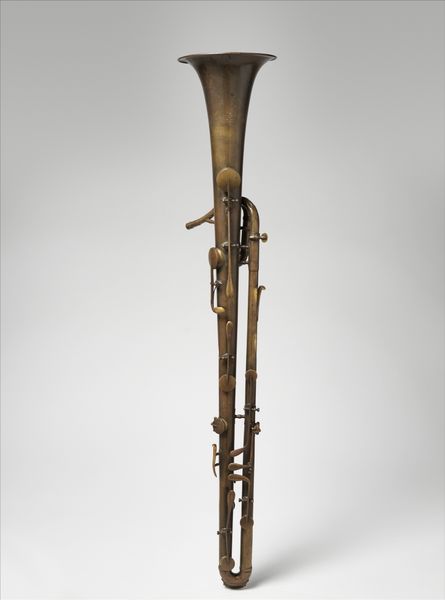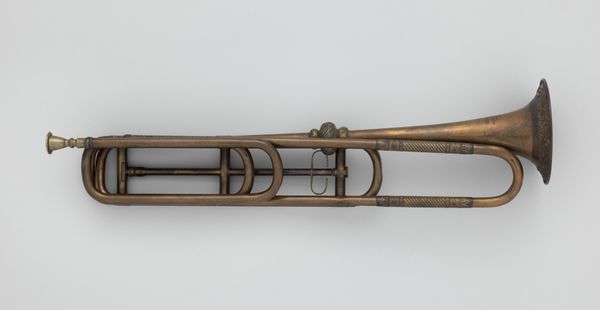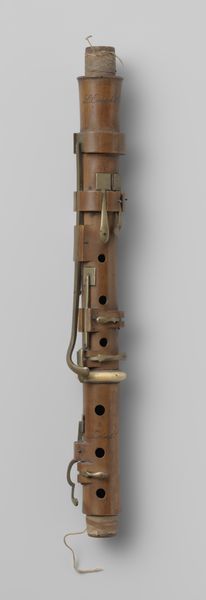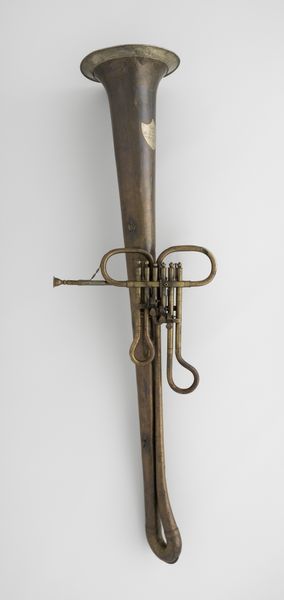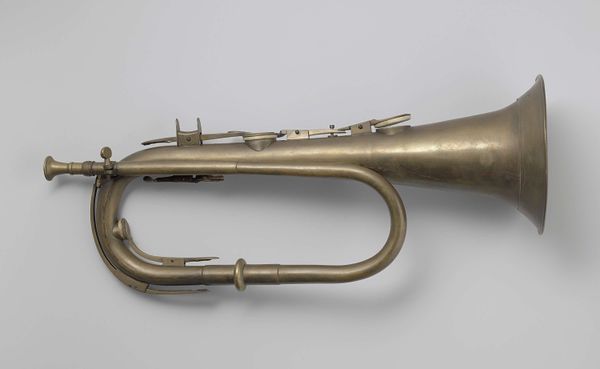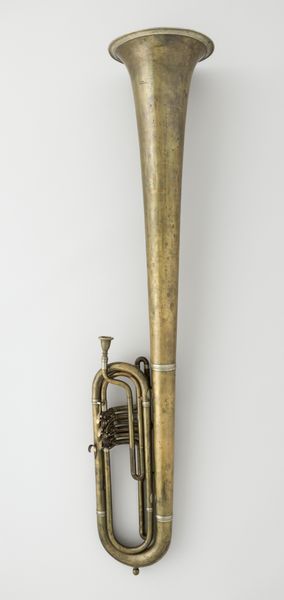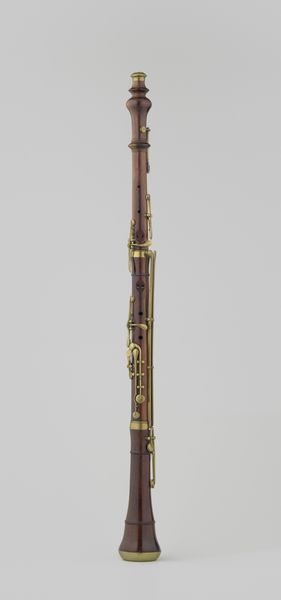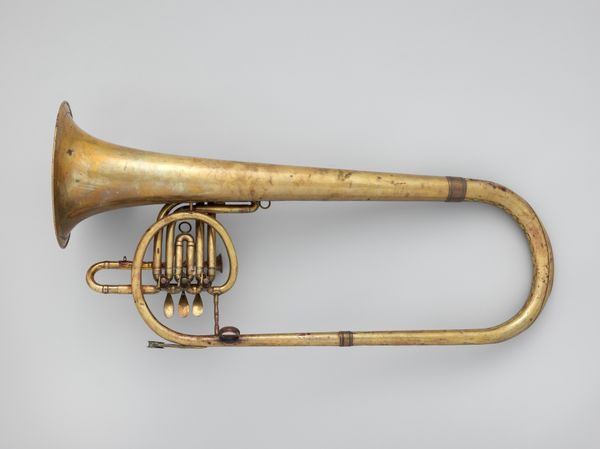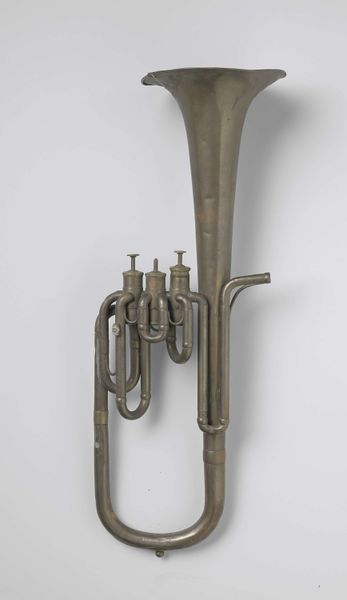
brass, ceramic, sculpture, wood
#
brass
#
medieval
#
sculpture
#
ceramic
#
sculpture
#
france
#
ceramic
#
men
#
wood
#
musical-instrument
Dimensions: 110cm (box) x 46cm (box) x 34cm (box) L. 101 cm., Diameter. of bell +/-17.1 cm., Diameter of bore inside reciever 0.429 in. inside larger end of crook 1.105 in. inside brass tenon that enters wood tube 1.775 in.
Copyright: Public Domain
This Serpent Forveille in B-flat was made by Forveille around the 1830s. It is comprised of wood and brass, as well as a mouthpiece of ivory. The dark wood forms the body of the serpent, while the brass elements create the winding pipes and keys that allow the musician to play different notes. The serpent’s construction speaks volumes about the intersection of craft and industry in the 19th century. The woodwork likely involved traditional carving and shaping techniques. Meanwhile, the brass components suggest a level of metalworking expertise, involving casting, bending, and soldering. This combination of materials and processes reflects a moment when handmade and machine-made elements coexisted. The serpent's form is also remarkable. The coiling shape is both visually striking and acoustically functional. The many hours of labor it took to create this form would have been intensive. Ultimately, the Serpent Forveille reminds us that musical instruments are not just objects of sound, but artifacts that embody social histories of labor, skill, and innovation.
Comments
No comments
Be the first to comment and join the conversation on the ultimate creative platform.

